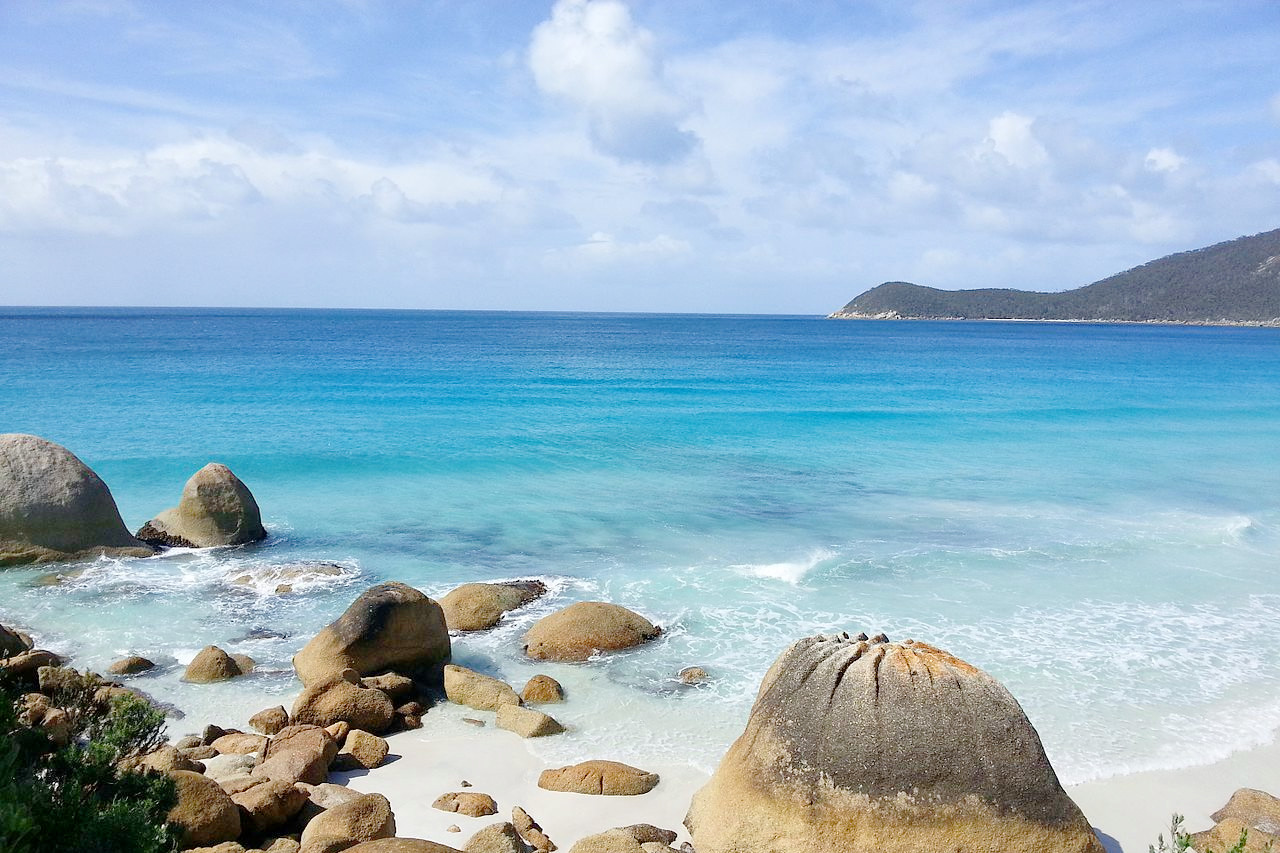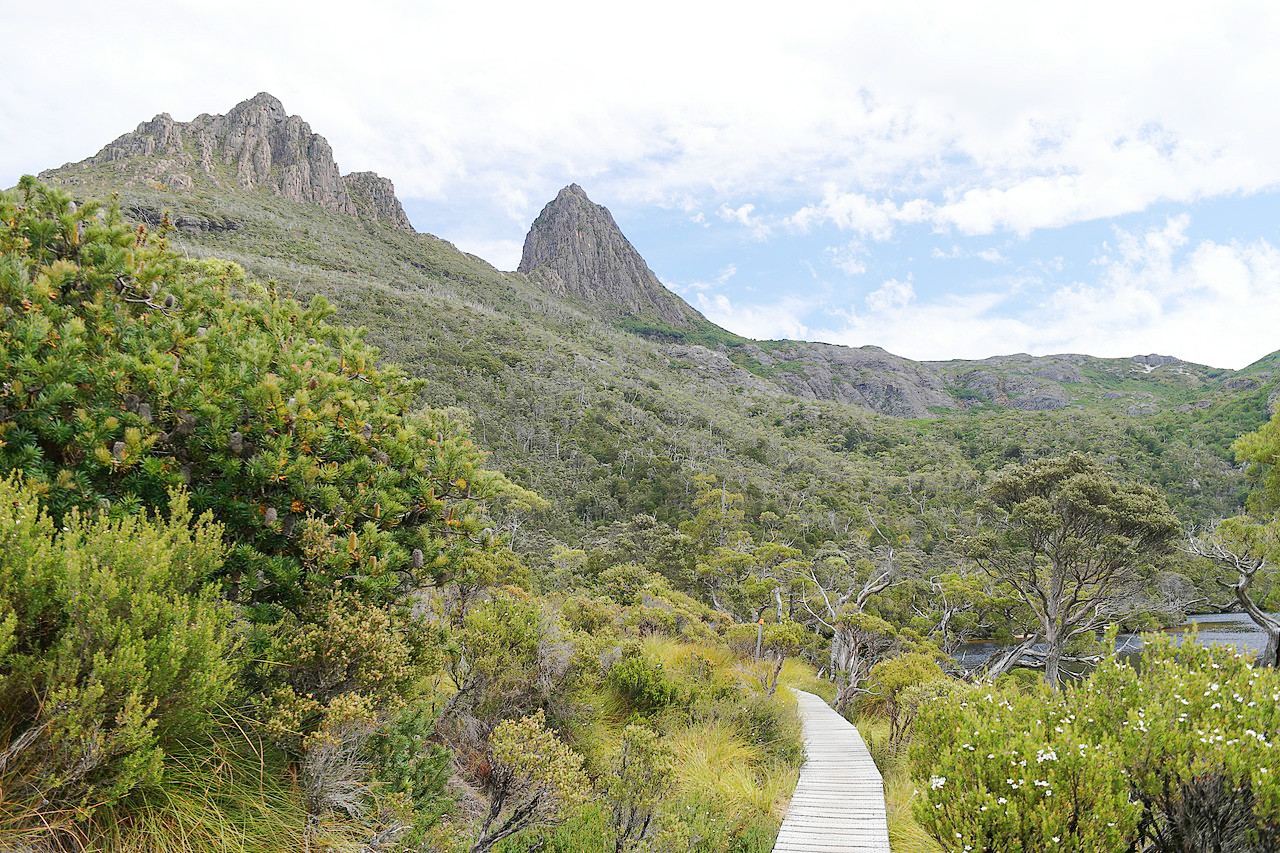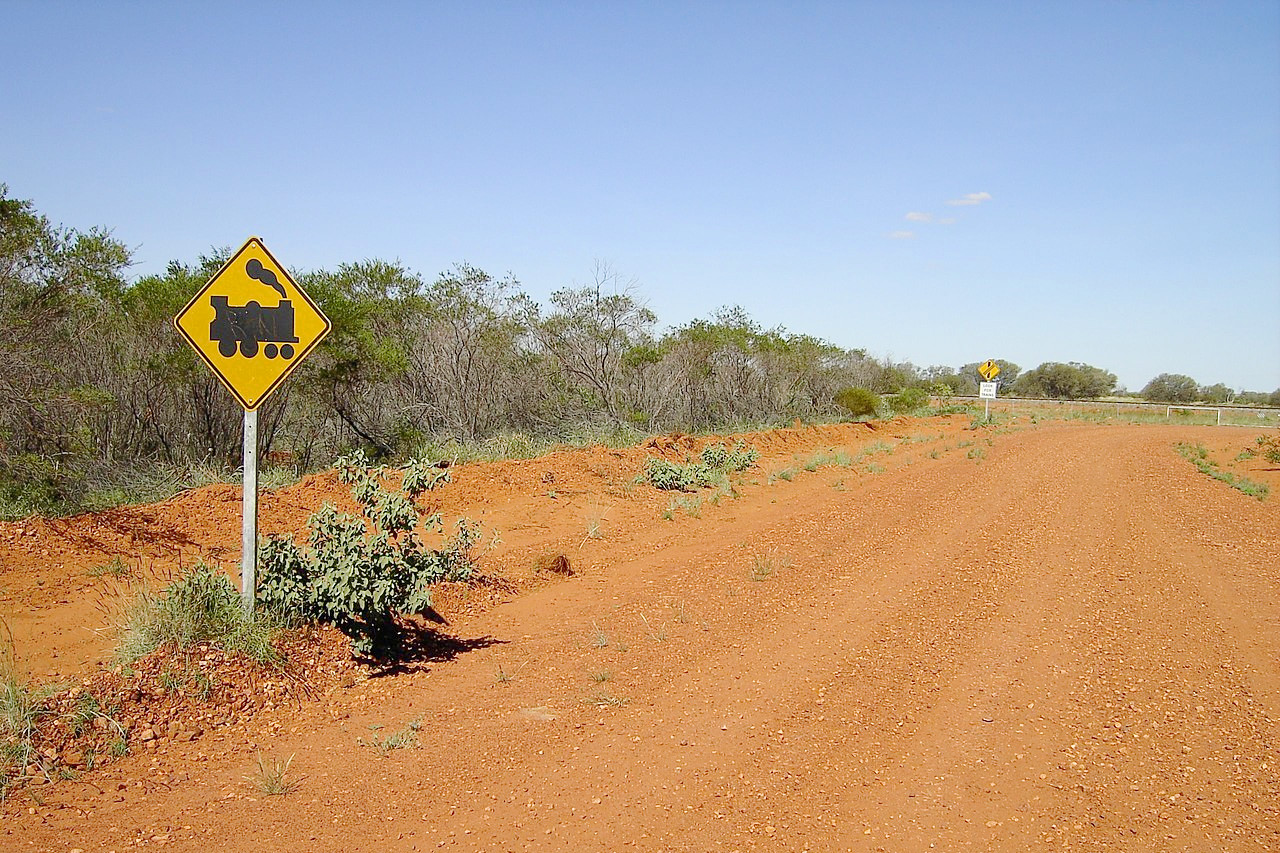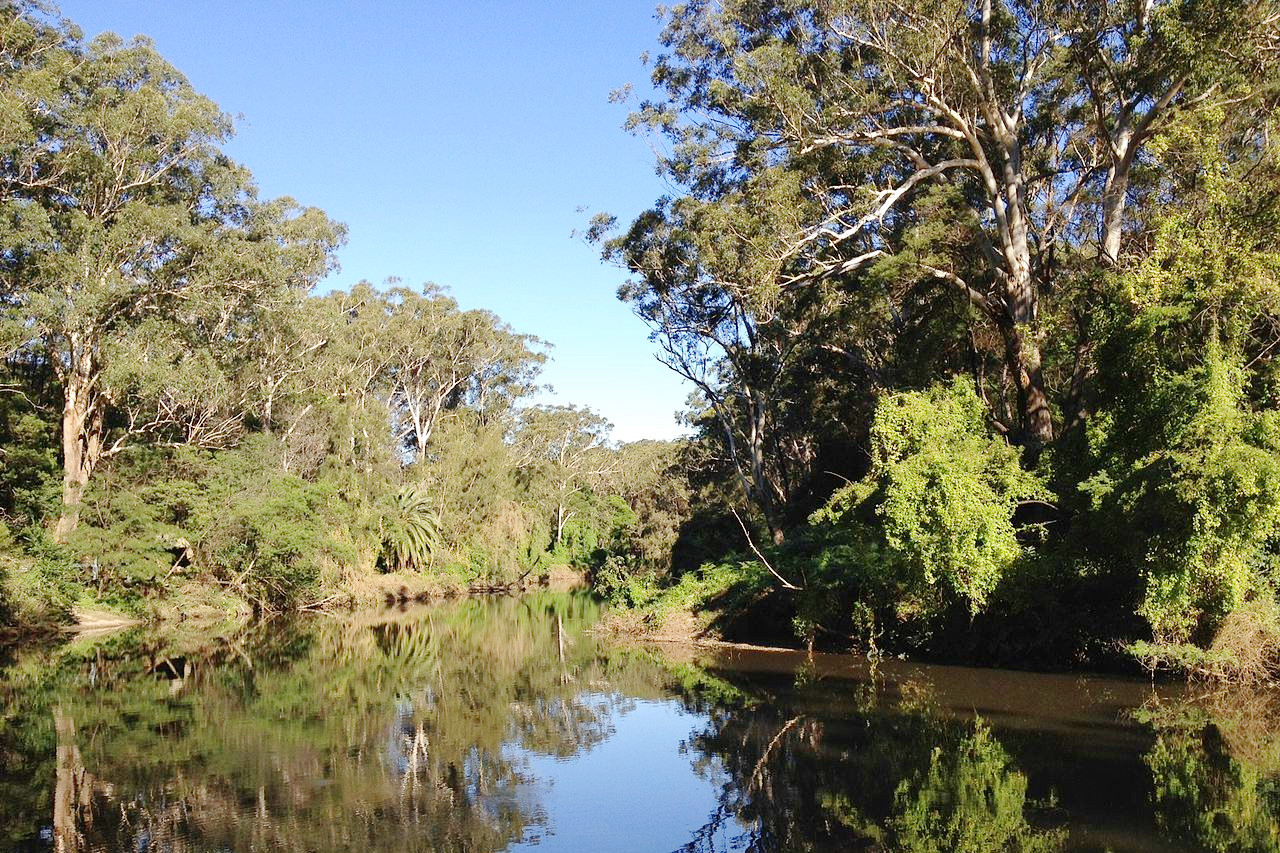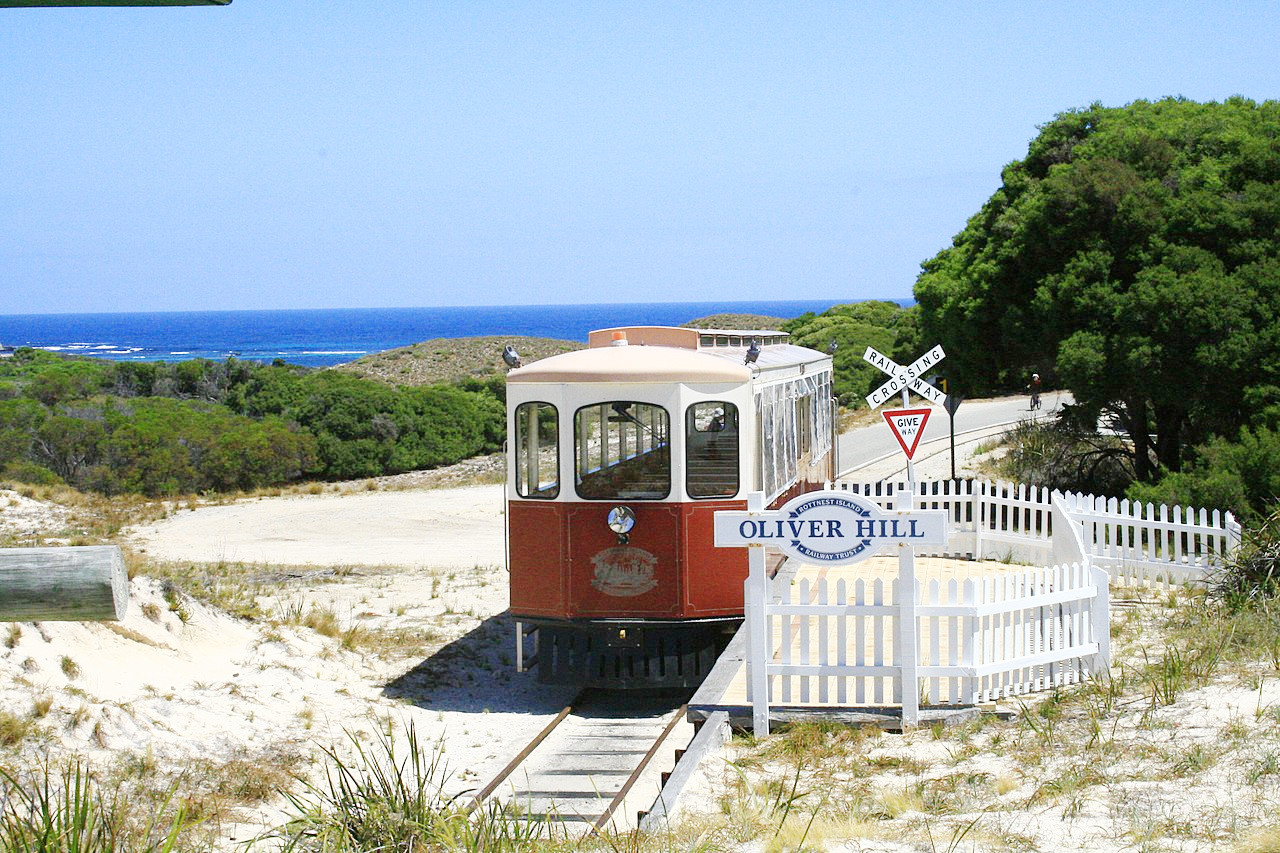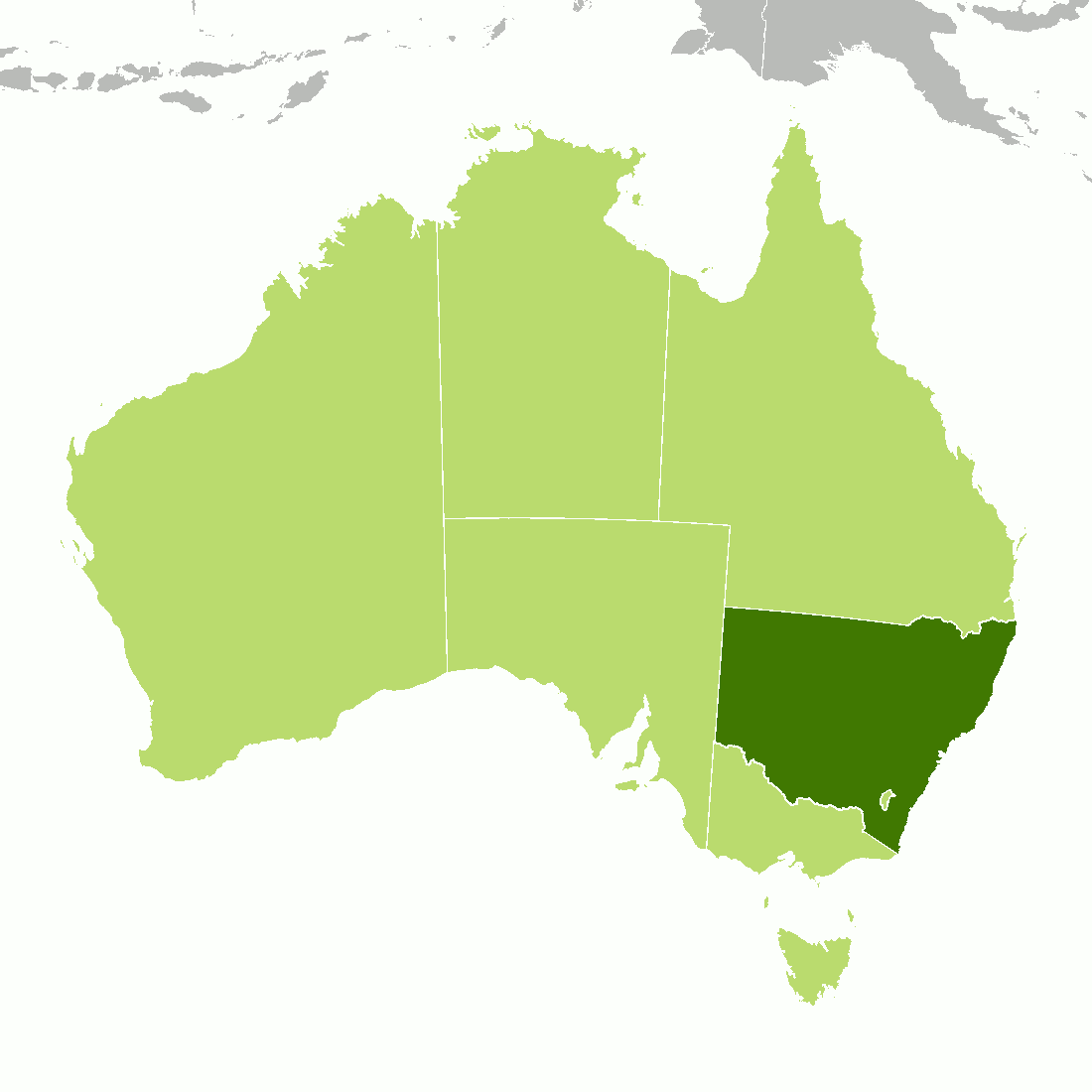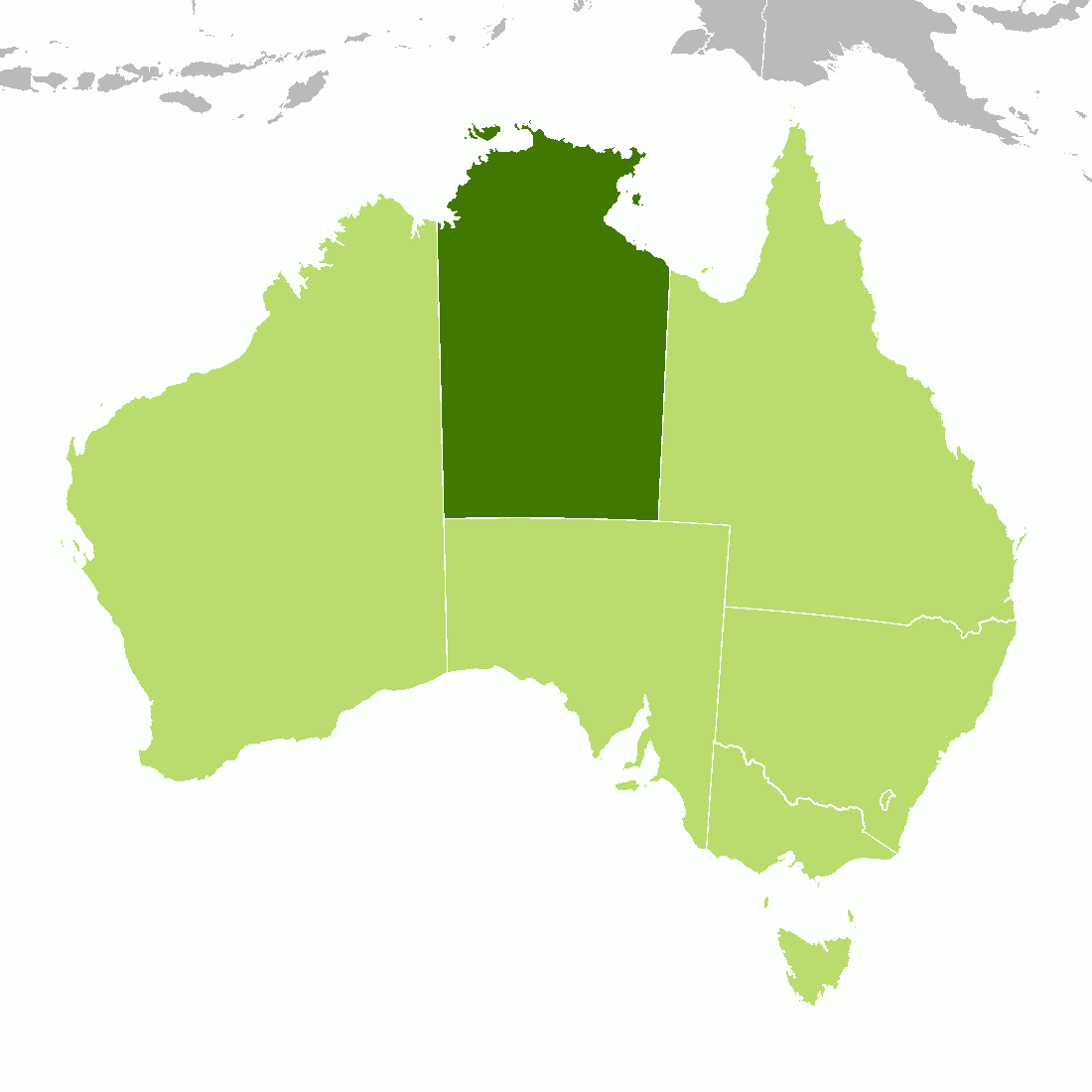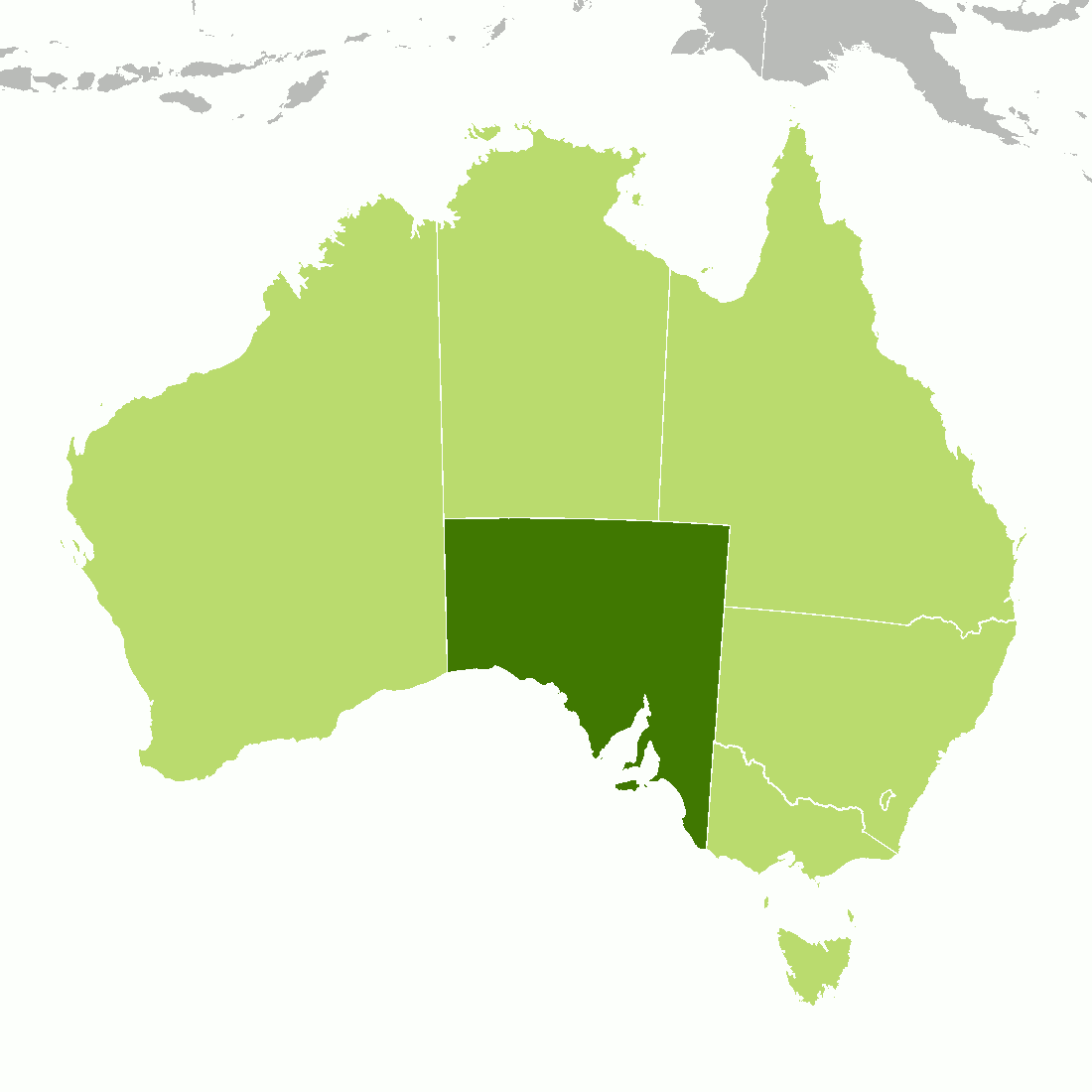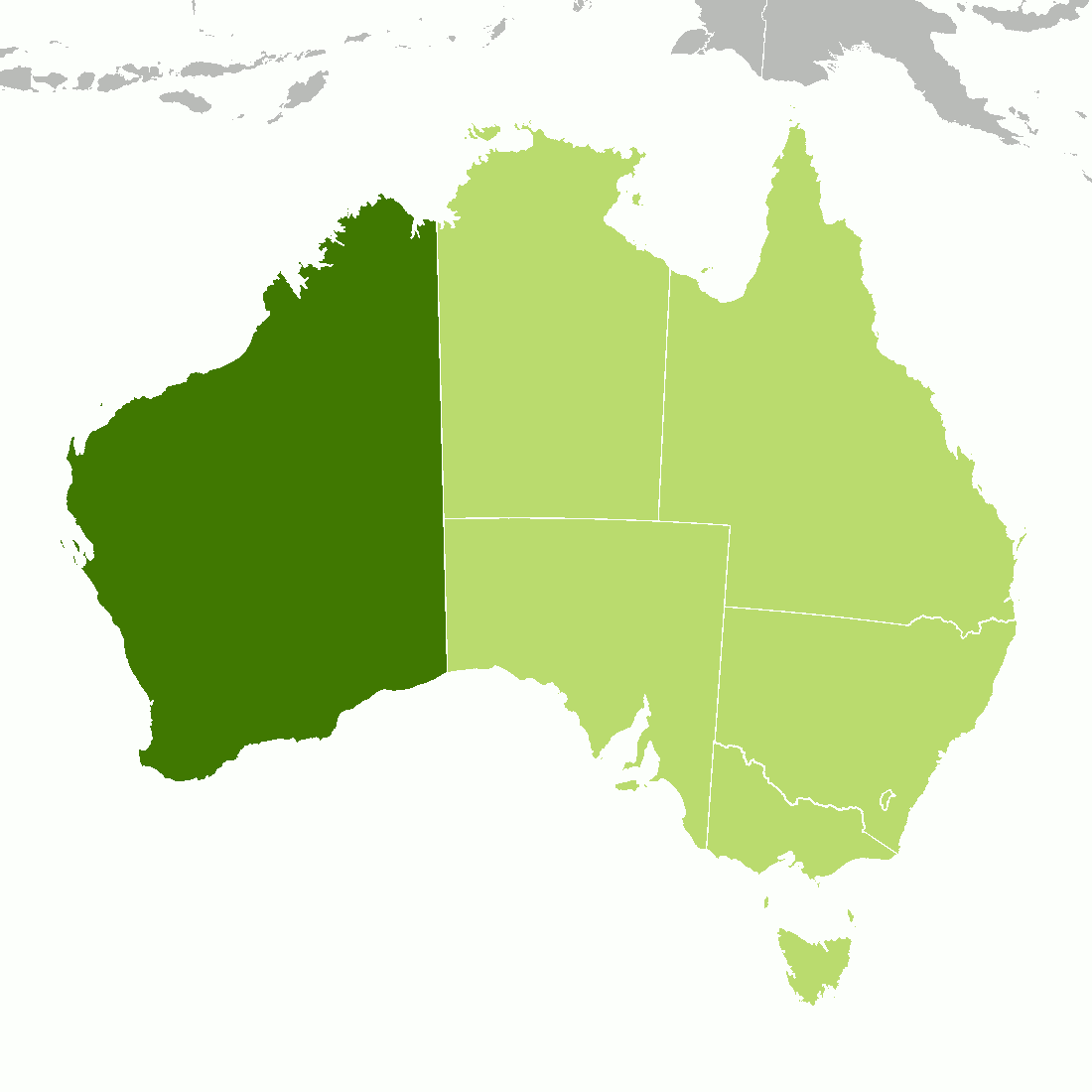The Geography of
Australia
Why visit Australia?
Australia is the world's largest island, smallest continent and sixth largest country. The habitat is unique and exotic. There are massive rocky outcrops and sheer mountains; cliffs hem an ocean that is wild. The forests are full of wonderfully amazing animals: koalas sitting in nooks high up in eucalyptus trees, and kangaroos nibbling on the bushes in any clearing. Lone roads stretch seemingly endlessly through the countryside before eventually the green turns to red, the bush into desert, and you can go for thousands of kilometers without seeing a single person.
Contents
Map
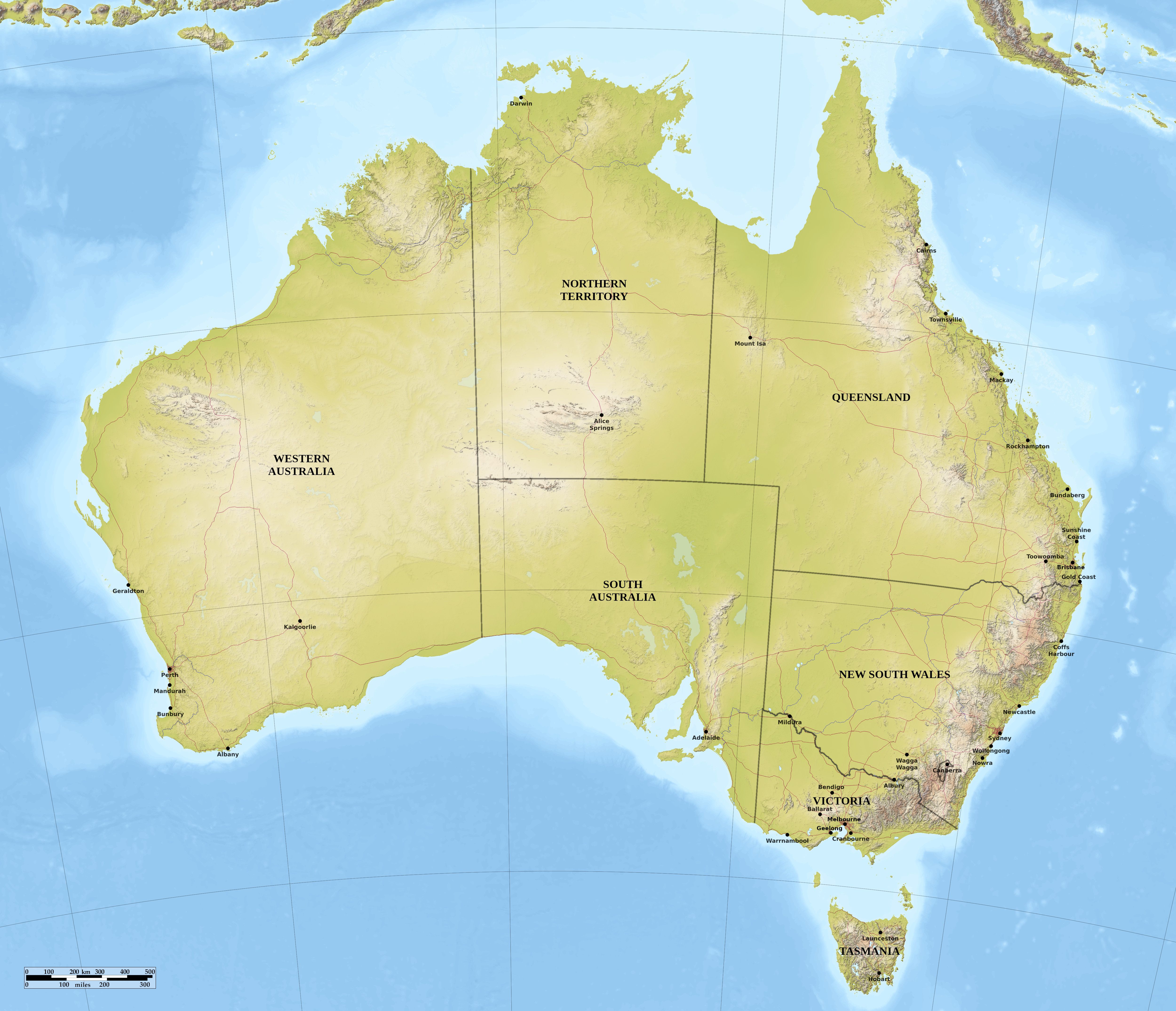 Relief map of Australia
Relief map of Australia
What is the landscape of Australia like?
The outstanding feature of Australia is the huge expanse of desert land, a "red heart" dominating the center of the continent. Australians use the word Outback in referring to this dry interior. On the east, the desert is bordered by an encircling "Green Crescent" where adequate rainfall occurs. Here can be found the Great Dividing Range, not one solid mass of mountains, but instead a collection of separate ridges, ranges, and hill districts, each with a different name.
Also in the east is the amazing Great Barrier Reef. Paralleling the Pacific coast of Queensland for 2,000 kilometers (1,250 miles), this constitutes the world's largest coral reef. The brilliant colors of the coral and the fish living in the reef make it a major tourist attraction.
What is the nature of Australia like?
The environment of Australia is very distinctive, and is of two very different types; That of the moist east and north coasts, which is tropical in its luxuriance, and that of the interior, and parts of the south and west coasts, which is that of the desert. The leaves of many of the plants are of tough, fibre-like consistency, and some of them are needle-shaped; thus rapid evaporation is prevented, for they do not collect the Sun's rays as do the broad-leaved plants. Eastern and northern Queensland, with its moist tropical climate, produces a dense tropical plant growth, such as tree ferns, bamboos, palms, and canes, with numerous orchids. The palm and the pandanus (of the screw-pine family), with their aerial roots and palmy branches, are distinctive forms. The bottle-tree also, with its curious shape, deserves mention. The grass tree is also found in the eastern Australian region. In Victoria the vegetation is almost tropical in its richness in the mountain regions, but in the plains is somewhat sparse, the trees growing in park-like clumps. Here the eucalyptus reaches its greatest height (exceeding 120 meters / 400 feet), tree ferns present their wonderful growth, and numerous small ferns aid in giving a special aspect to the vegetation. Fan palms and acacias also flourish. Grass and salt brush are distinctive types of lowland flora. In South Australia and Northern Territory there is a sparse vegetation, being a scrub with sedges, grasses, etc., as well as the grass tree, thorny plants, and a stunted growth of eucalyptus. Thickets of the paper-bark tree also occur. This growth, known as the 'Bush,' is impenetrable in some regions. On the coast are found mangroves.
The animal life is more isolated than is that of any other great region of the planet. Australia is famous for its marsupials (pouch mammals), as well as the monotremes (egg-laying mammals). They differ greatly in form, in appearance, and in habits, resembling wolves, marmots, weasels, squirrels, flying squirrels, and jerboas. The insectivores include the bandicoots; the root-eaters include the wombats; and the fruit-eaters include opossums. The grass-eaters are the kangaroos, of which there are many genera, including the smaller wallabies. The monotremes are the platypus and the echidna; the former of which, with its otter-shaped body and duck bill, is regarded as the most unique of existing mammals. The dingo or wild dog is also a native of Australia.
What is the climate of Australia like?
See our main article: The Climate of Australia
The climate of Australia is generally arid to semiarid; temperate in the south and east; tropical in the north. The country presents extremes of temperature. The east coast has a fairly uniform temperature, the mean annual temperature ranging from 27°C (80°F) in the north to 13°C (55°F) in the south. In the interior, on the other hand, the contrast between summer and winter is great, and the average temperature of the hottest month is around 35°C (95°F). In this region very high temperatures are reported, 50.7 °C (123.3°F) having been recorded.
The rainfall is heaviest upon the north and east coasts, and throughout the interior it is very dry. Most of the moisture brought to Australia comes with the trade winds from the southeast, and is of course deposited on the east and north coasts, whose mountain ranges strain nearly all the moisture from the air currents, leaving them to flow as dry winds over the plains of the interior. The moisture in the southwest and in the State of Victoria on the south coast, on the other hand, is brought by the prevailing westerly winds, whose influence extends up the west coast only as far north as Perth.
| Climate data for Canberra (1991–2010) | |||||||||||||
|---|---|---|---|---|---|---|---|---|---|---|---|---|---|
| Month | Jan | Feb | Mar | Apr | May | Jun | Jul | Aug | Sep | Oct | Nov | Dec | Year |
| Average high °C (°F) | 28.8 (83.8) | 27.8 (82.0) | 24.9 (76.8) | 20.7 (69.3) | 16.6 (61.9) | 12.9 (55.2) | 12.1 (53.8) | 13.8 (56.8) | 16.8 (62.2) | 20.1 (68.2) | 23.4 (74.1) | 26.5 (79.7) | 20.4 (68.7) |
| Daily mean °C (°F) | 21.4 (70.5) | 20.8 (69.4) | 17.9 (64.2) | 13.7 (56.7) | 10.0 (50.0) | 7.3 (45.1) | 6.2 (43.2) | 7.5 (45.5) | 10.4 (50.7) | 13.4 (56.1) | 16.5 (61.7) | 19.3 (66.7) | 13.7 (56.7) |
| Average low °C (°F) | 14.0 (57.2) | 13.8 (56.8) | 10.9 (51.6) | 6.6 (43.9) | 3.4 (38.1) | 1.6 (34.9) | 0.3 (32.5) | 1.2 (34.2) | 4.0 (39.2) | 6.7 (44.1) | 9.6 (49.3) | 12.1 (53.8) | 7.0 (44.6) |
| Average precipitation mm (inches) | 61.3 (2.41) | 55.2 (2.17) | 37.6 (1.48) | 27.3 (1.07) | 31.5 (1.24) | 50.0 (1.97) | 44.3 (1.74) | 43.1 (1.70) | 55.8 (2.20) | 50.9 (2.00) | 68.4 (2.69) | 54.1 (2.13) | 579.5 (22.81) |
| Source: Bureau of Meteorology | |||||||||||||
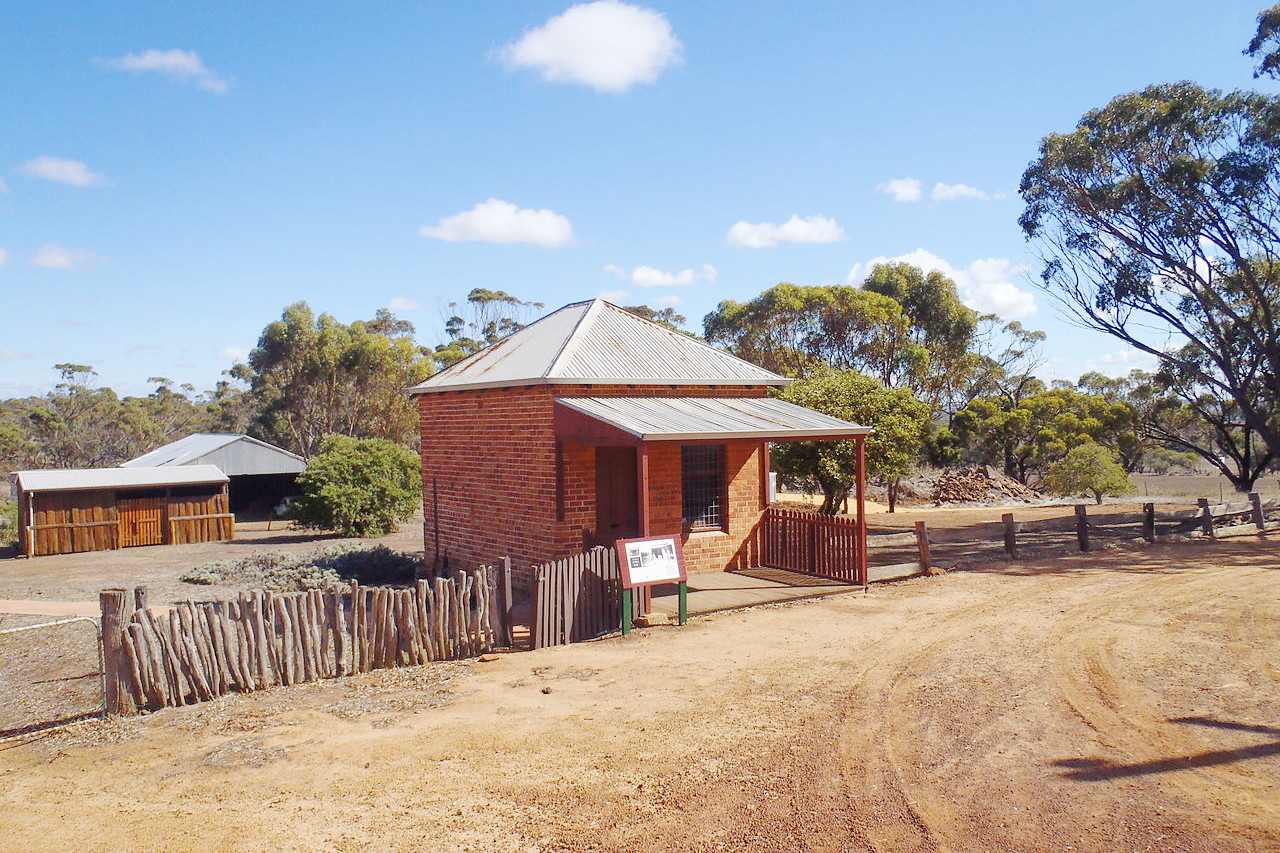 Old post-office building, Arthur River, Western Australia
Old post-office building, Arthur River, Western Australia
The official websites
Australia
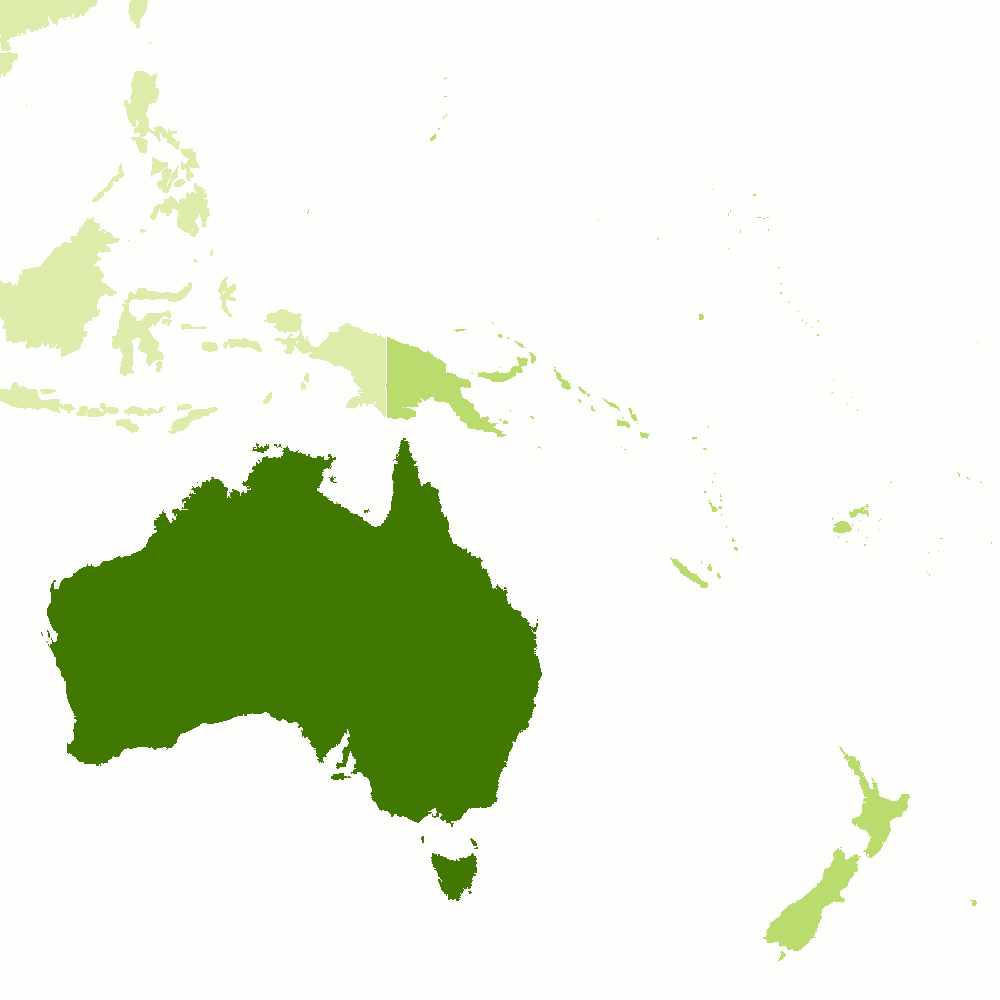
Don't go small. Go Australia!
| Location: | To the southeast of Asia, between the Pacific and Indian oceans |
| Coordinates: | 28° 00′ S, 134° 00′ E |
| Size: | • 3200 km N-S; 4000 km E-W • 2000 miles N-S; 2500 miles E-W |
| Terrain: | A low, sandy eastern coastal plain; a western plateau covered with great deserts; central plains; eastern highlands with mountains |
| Climate: | Generally warm and dry: mild in the south, but hot in the central interior and north. Low rainfall in many areas with dry seasons |
| Highest point: | Mount Kosciuszko 2,228 m / 7,310 ft |
| Forest: | 17% (2018) (source) |
| Population: | 26,141,369 (2022 est.) |
| Population density: | Very Low (3.4/km²) |
| Capital: | Canberra |
| Languages: | English 72.7%, Mandarin 2.5%, Arabic 1.4%, |
| Human Development Index: | Very High (0.944) |
| Currency: | Australian Dollar |

